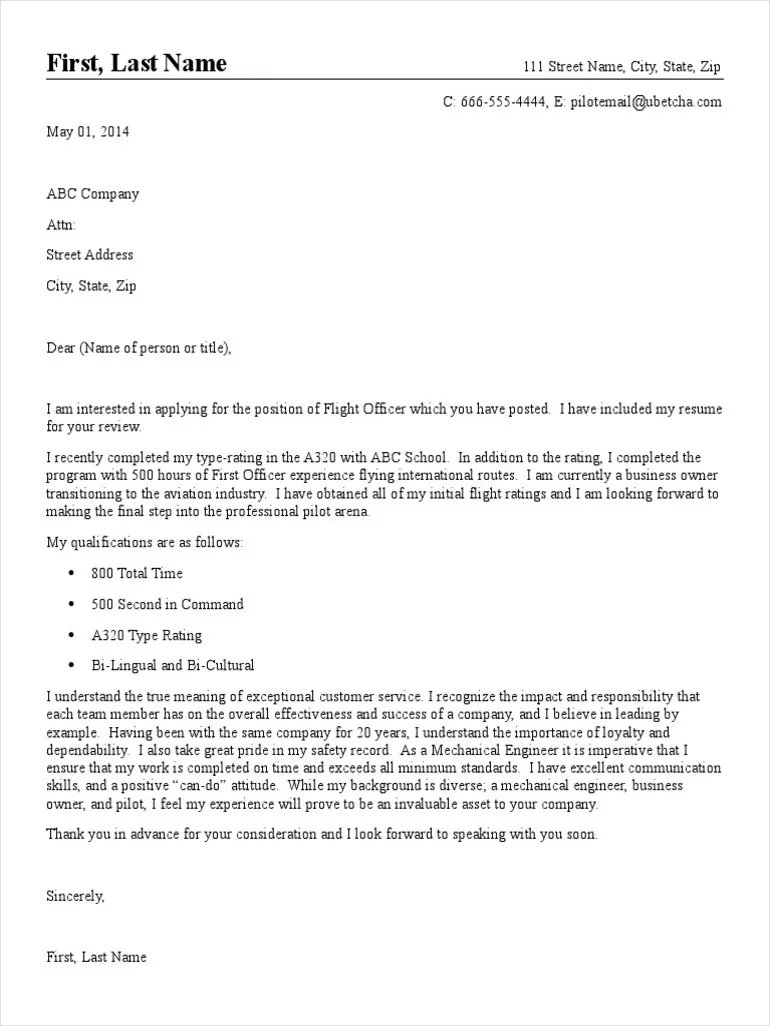What is a Pilot Cover Letter?
A pilot cover letter is a crucial document that accompanies your resume when applying for a pilot job. It serves as your introduction to the hiring manager and provides an opportunity to showcase your qualifications, experience, and passion for aviation. It goes beyond simply listing your accomplishments; it allows you to connect with the hiring manager on a more personal level, demonstrating why you are the ideal candidate for the position. A well-crafted cover letter can significantly increase your chances of landing an interview and ultimately, your dream job.
Why is a Pilot Cover Letter Important?
In the competitive field of aviation, a cover letter provides a vital opportunity to distinguish yourself from other applicants. While your resume details your qualifications, the cover letter allows you to elaborate on your skills, express your enthusiasm, and demonstrate your understanding of the specific job requirements. It is a chance to tell your story and highlight what makes you unique. Many hiring managers consider the cover letter a key factor in determining who to interview. A compelling cover letter showcases your communication skills, attention to detail, and genuine interest in the position.
Key Components of a Pilot Cover Letter
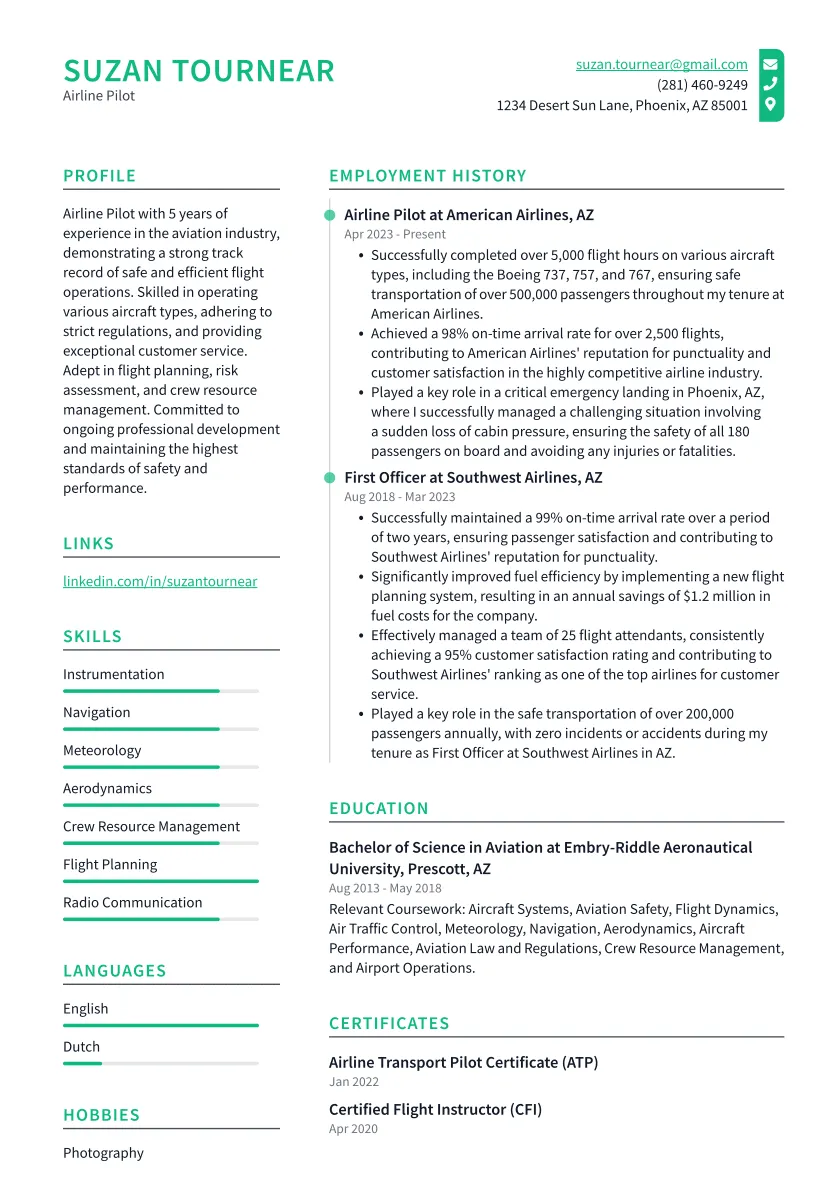
A well-structured pilot cover letter typically includes several essential components, each serving a specific purpose in presenting your qualifications and suitability for the role. These elements work together to create a cohesive and persuasive narrative that captures the hiring manager’s attention and encourages them to learn more about you.
Contact Information and Date
Begin your cover letter with your full name, address, phone number, and email address. Include the date below your contact information. This ensures the hiring manager can easily reach you.
Hiring Manager’s Information
If possible, address your cover letter to a specific person, such as the hiring manager or chief pilot. Researching the company and finding the name of the appropriate contact person shows initiative and professionalism. If you cannot find a specific name, use a professional salutation like “Dear Hiring Manager.”
Professional Salutation
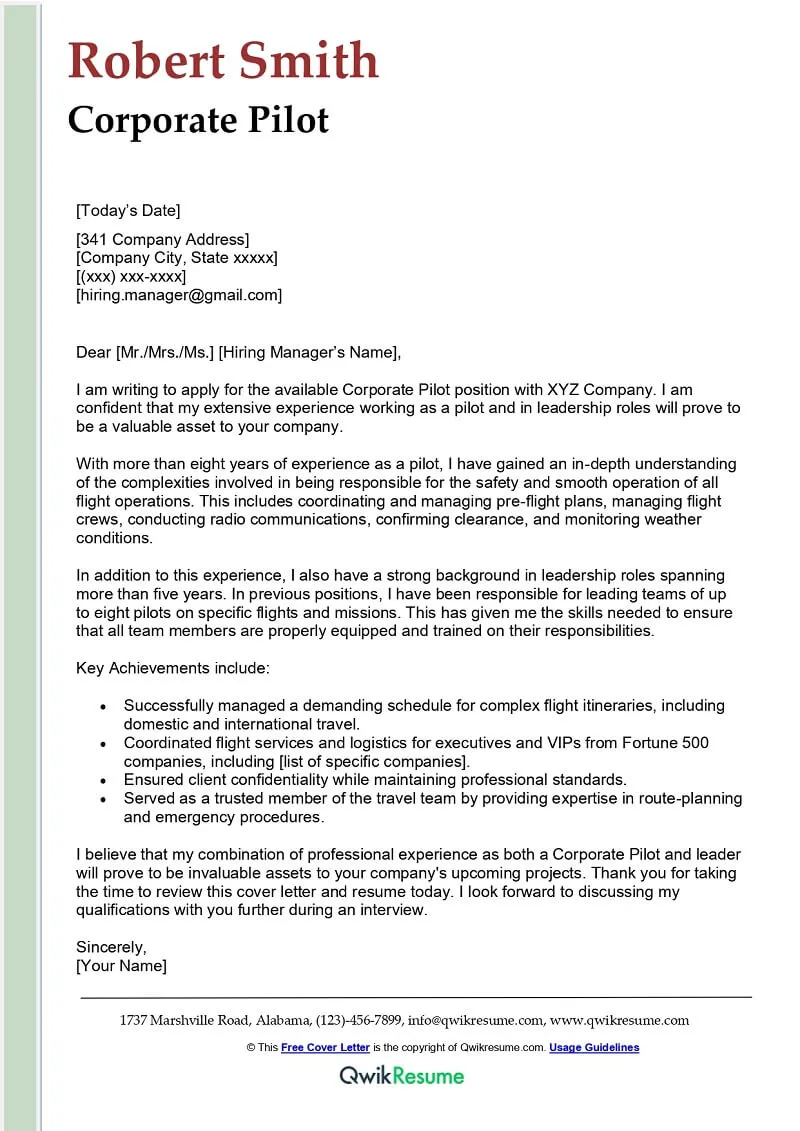
Use a formal and respectful salutation, such as “Dear Mr./Ms. [Last Name]” or “Dear Hiring Manager.” Avoid informal greetings or abbreviations.
Opening Paragraph Captivate the Reader
Your opening paragraph is your first opportunity to grab the hiring manager’s attention. Briefly introduce yourself and state the position you are applying for. Express your enthusiasm for the role and the company. Mention where you saw the job posting and, if applicable, how you learned about the opportunity. Consider including a brief, compelling statement that highlights your most relevant qualification or achievement.
Highlighting Your Qualifications
The body of your cover letter is where you showcase your qualifications, experience, and skills. Focus on the key requirements of the job and demonstrate how your background aligns with those needs. Use specific examples to illustrate your achievements and quantify your accomplishments whenever possible. Tailor your letter to the specific job and company, rather than using a generic template.
Pilot Licenses and Ratings
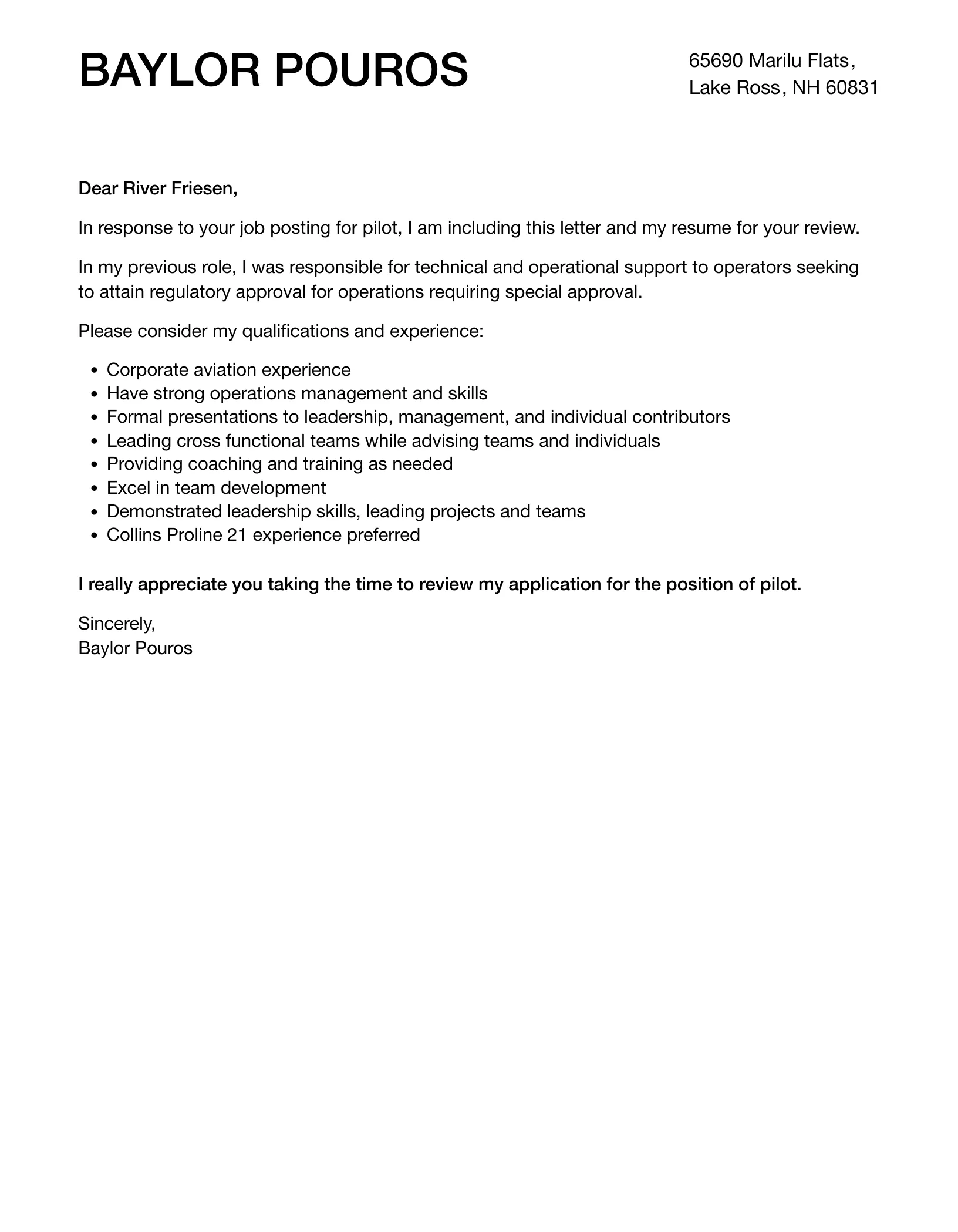
Clearly list your pilot licenses and ratings, such as Airline Transport Pilot (ATP), Commercial Pilot, or Private Pilot Certificate. Include any relevant endorsements, such as instrument rating, multi-engine rating, or type ratings. Ensure that all information is accurate and up-to-date. Highlight any specialized training or certifications relevant to the job.
Flight Experience and Hours
Provide a summary of your flight experience, including total flight hours, hours in command (PIC), and hours in specific aircraft types. Be specific about the types of flying you have experience with, such as cross-country, night, or instrument flight. If the job requires a certain amount of flight time, make sure to highlight that you meet or exceed those requirements.
Aircraft Type Experience
Detail your experience with specific aircraft types, particularly those relevant to the job. If you have experience with the same aircraft the company uses, be sure to emphasize this. Include the number of hours flown in each aircraft type and any relevant maintenance or operational experience.
Skills and Competencies
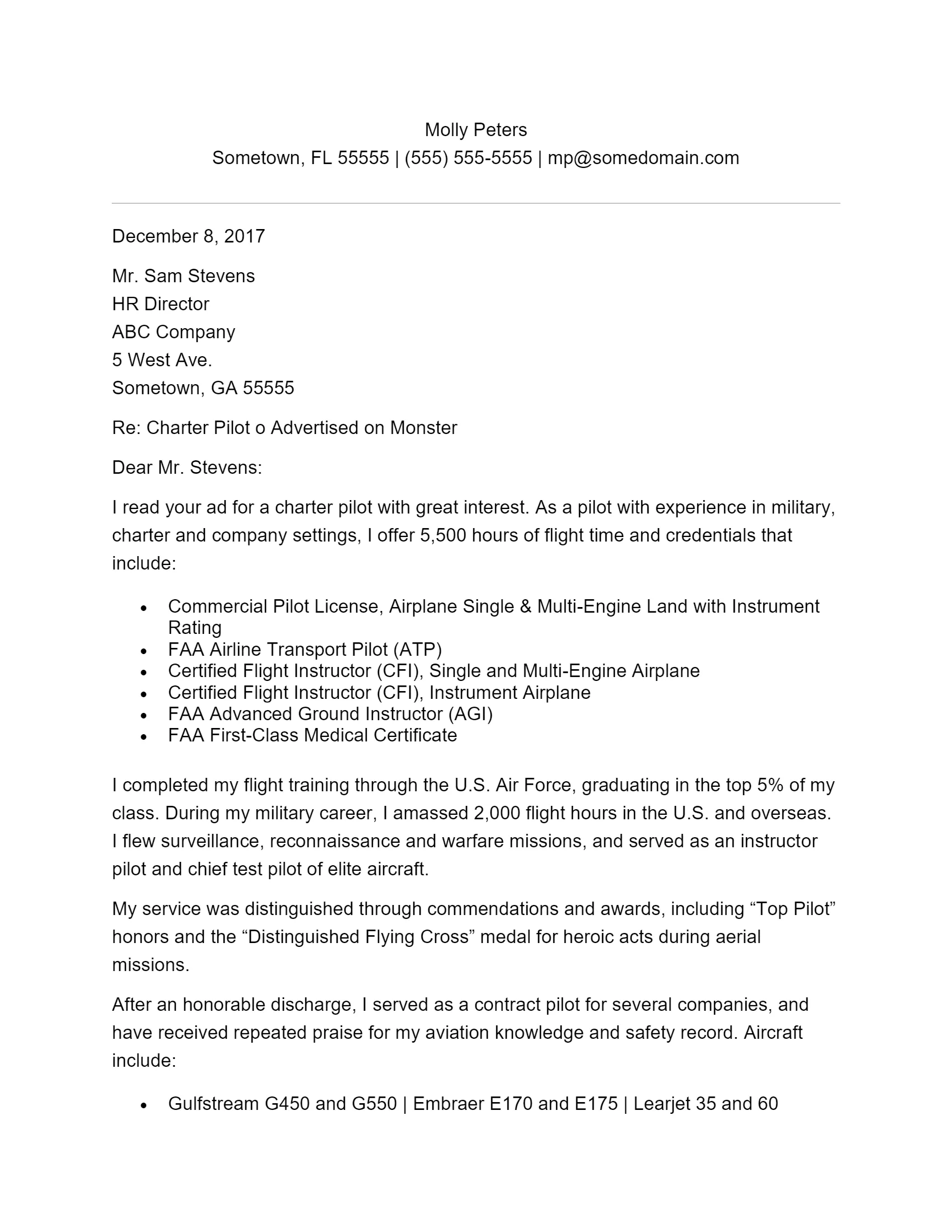
Highlight your key skills and competencies that align with the job requirements. These can include technical skills, such as flight planning, navigation, and aircraft systems knowledge, as well as soft skills, such as communication, teamwork, and problem-solving. Provide specific examples of how you have demonstrated these skills in previous roles.
Communication and Teamwork
Pilots must effectively communicate with air traffic control, crew members, and passengers. Highlight your communication skills, including your ability to clearly and concisely convey information. Demonstrate your ability to work collaboratively in a team environment, emphasizing your experience working with other pilots, mechanics, and ground crew.
Problem-Solving and Decision-Making
Pilots face complex situations that require quick and effective problem-solving skills. Provide examples of situations where you have made critical decisions under pressure, such as handling emergencies, navigating challenging weather conditions, or resolving mechanical issues. Highlight your ability to think critically and make sound judgments.
Tailoring Your Cover Letter
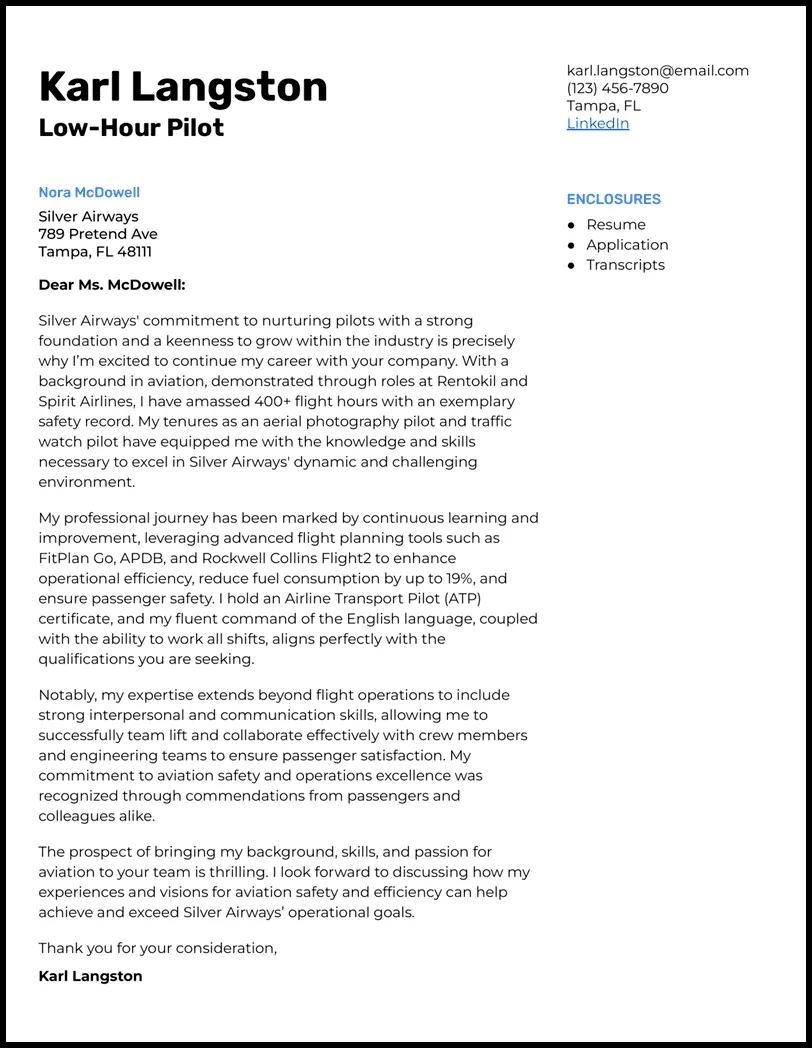
Customizing your cover letter for each job application is essential. A generic cover letter will not impress hiring managers. Instead, take the time to research the company and the specific job requirements. This demonstrates your genuine interest and increases your chances of getting noticed. Consider the following points when tailoring your letter.
Research the Company
Before writing your cover letter, thoroughly research the company. Understand their mission, values, and the types of flights they operate. Show that you understand their business and how your skills and experience align with their specific needs. Visit their website, read their social media, and look for news articles or press releases to gain insights.
Match Skills to Job Requirements
Carefully review the job description and identify the key skills and qualifications the employer is seeking. Highlight your relevant skills and experience, and provide specific examples of how you have demonstrated them in previous roles. Use keywords from the job description to help your application get past applicant tracking systems (ATS).
Quantify Achievements
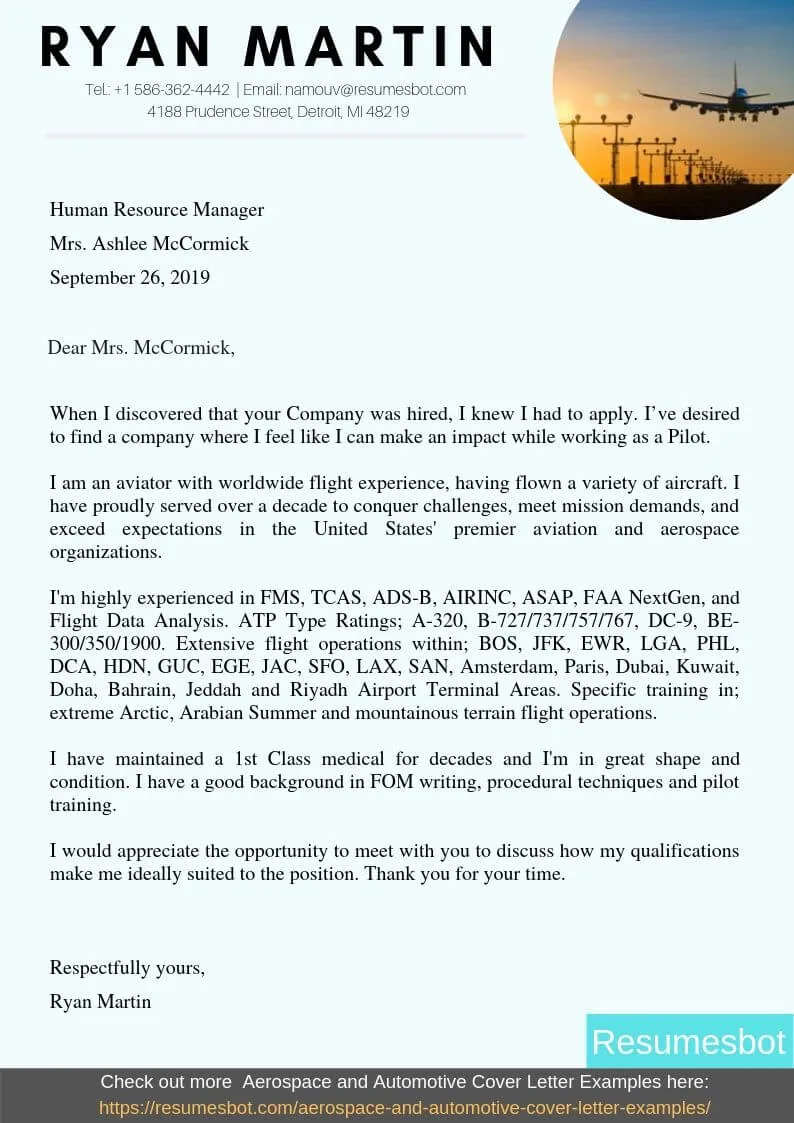
Whenever possible, quantify your achievements to demonstrate the impact you have made in previous roles. Instead of saying “Improved safety,” say “Reduced safety incidents by 15% through implementing new safety procedures.” Use numbers, percentages, and specific examples to show the value you can bring to the company.
Formatting and Design
The appearance of your cover letter is just as important as its content. A well-formatted cover letter is easy to read and presents a professional image. Consider the following guidelines when formatting your letter.
Professional Font and Layout
Use a clean, professional font such as Times New Roman, Arial, or Calibri. Use a font size between 10 and 12 points. Maintain consistent spacing and margins (1 inch on all sides). Use bullet points or short paragraphs to break up large blocks of text and make your letter more readable.
Proofreading and Editing
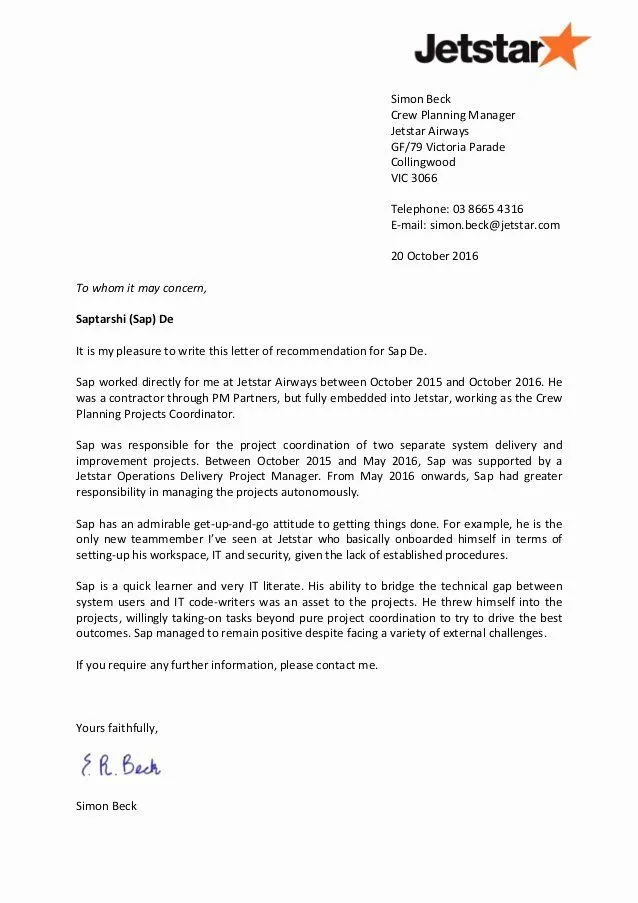
Proofread your cover letter carefully for any typos, grammatical errors, or spelling mistakes. Ask a friend or colleague to review your letter as a second pair of eyes. Errors can create a negative impression and undermine your credibility.
Common Mistakes to Avoid
Avoid these common mistakes to ensure your cover letter makes a positive impression.
Typos and Grammatical Errors
Carelessly written cover letters with numerous errors signal a lack of attention to detail and a lack of professionalism. Always proofread your letter multiple times and use spell-check and grammar-check tools.
Generic Cover Letters
Sending a generic cover letter that is not tailored to the specific job or company shows a lack of interest. Customize each cover letter to demonstrate your understanding of the company’s needs and your suitability for the role. Avoid using the same letter for every application.
Lying or Exaggerating
Never lie or exaggerate your qualifications or experience. Honesty and integrity are critical in the aviation industry. Any discrepancies between your cover letter and your resume or interview responses can be easily detected.
The Closing Paragraph
Your closing paragraph is your last chance to make a strong impression. Use it to express your enthusiasm, reiterate your interest, and provide a call to action.
Expressing Enthusiasm and Gratitude
Reiterate your enthusiasm for the position and express your gratitude for the hiring manager’s time and consideration. Thank them for the opportunity to be considered for the role.
Call to Action
End your letter with a call to action, such as expressing your availability for an interview and providing your contact information. Make it easy for the hiring manager to reach you.
Cover Letter Template for Pilots
Here is a general template that you can adapt for your pilot cover letter:
Final Thoughts and Tips
Writing a compelling cover letter is a crucial step in the job application process for pilots. By following these guidelines and tailoring your letter to each job application, you can significantly increase your chances of landing an interview and ultimately, your dream job. Always proofread your letter and have a trusted friend or colleague review it before submitting it. Good luck!
